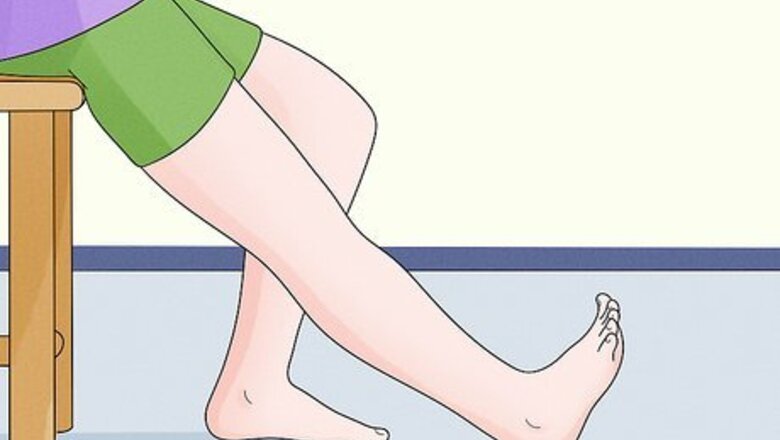
views
X
Research source
The reflex makes the baby's big toe curl upward when you apply pressure to their foot. It usually disappears by age 2, so checking for it is a good way to track a baby’s development. The Babinski test is also useful to check adults for nerve or neurological disorders, since the reflex can return in these cases.[2]
X
Expert Source
Mohammad Dar, MDBoard Certified Internist & Health Policy Director
Expert Interview. 28 September 2021.
Luckily, this is a very easy test to do. All you need is a pen or similar blunt object, and you’re all set to get started.
The Test
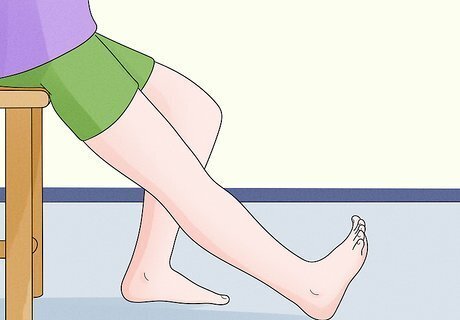
Stretch your foot out and relax. Detecting this reflex is easiest when your muscles are relaxed. Sit on a couch or the floor, take off your shoes and socks, and outstretch your legs. Relax your legs and feet. If you’re doing the test on someone else, have them stretch out and relax their feet. You could also test yourself for the reflex by resting your foot on your knee, but you won’t be able to relax your foot as well. It’s much easier to either test someone else or have another person test you.
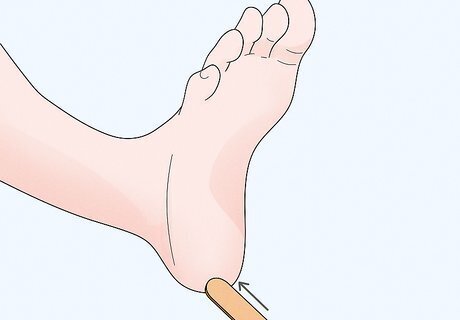
Press a blunt object above the heel near the outside of the foot. Any smooth, blunt objects can work for this. Doctors usually use a reflex hammer or tongue depressor, but you can use a pen or anything else you have handy. Firmly press the object into the foot along the outside edge of the foot, just above the heel. It’s okay if this is a little uncomfortable, but it shouldn’t hurt. You might be pressing too hard if it’s painful. Make sure whatever you use isn’t sharp or jagged in any way. If the object hurts at all, then stop right away. Get something else that feels better.
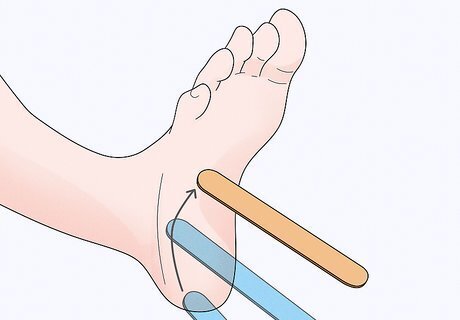
Slide the object up the foot to the toe joints. Maintaining the pressure, slide the object up along the outside edge of the foot. Continue moving up until you hit the meaty area below the toes, right where the toe joints start. If you need more stability, hold the top of the foot with your other hand.
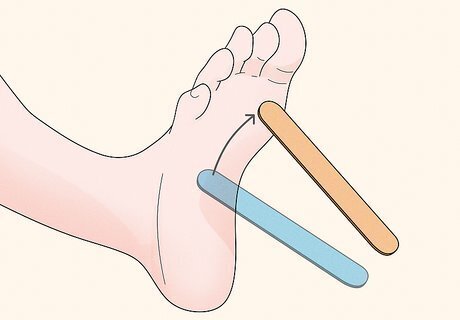
Sweep the object across the foot underneath the toe joints. Keep the object moving and curve towards the inside of the foot, towards the big toe. Slide the object beneath the toe joints until you reach the other side of the foot. Make this a smooth, single motion. Don’t stop moving the object.
Results
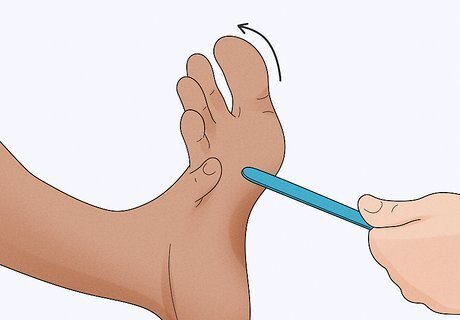
Look for the big toe to curl upward for a positive result. In a positive Babinski test, the big toe will curl up towards the top of the foot. The other toes may curl up as well. This indicates that you have the Babinski reflex. Pay close attention to how the big toe curls specifically—don't confuse the movement of the foot with the toe's movement. Someone moving their foot back can make it seem like their big toe is curling upward, but that larger movement is distracting from what the toe itself is doing.
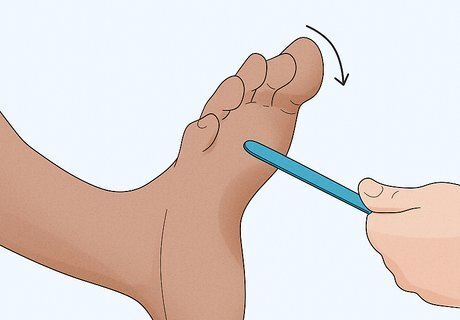
Notice if the toes curl downward for a negative result. If you don’t have the Babinksi reflex, then the toes will curl down instead of up. If you see this result, then the Babinski test is negative. You might also see no reaction. This is normal and considered a neutral result.
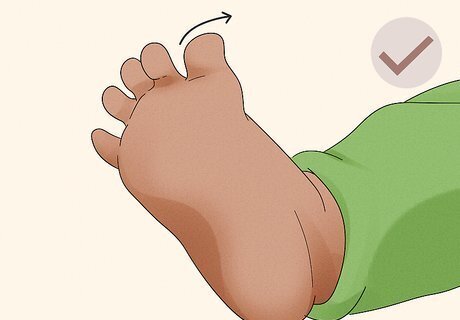
Don’t worry if a baby younger than 2 has the reflex. It’s completely normal for babies to have a positive Babinski test because their nerves aren’t fully formed yet. If you test a baby younger than 2 and they have the reflex, then everything is normal and you have nothing to worry about. Some babies lose the reflex as early as 12 months, so don’t worry if your baby doesn’t have the reflex. Not having the reflex isn’t usually considered a problem, but if you can’t find the Babinski sign on a baby younger than 12 months, talk to your pediatrician just to check if that’s okay.
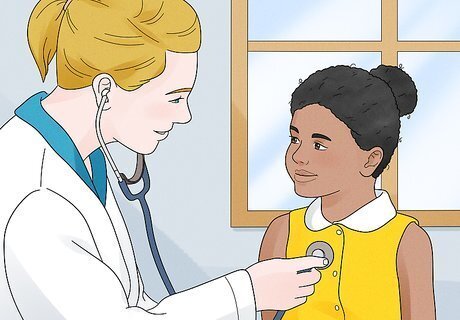
Call your pediatrician if a child older than 2 has the reflex. When a child develops normally, the Babinski sign disappears by age 2. If your child is older than 2 and you detect the reflex, then this could be a sign of trouble. Call your pediatrician and bring your child in for an exam. The main cause for a Babinski reflex in older children is some type of nervous system disorder, but don’t worry yet. Your doctor needs to examine your baby to determine if there is anything wrong first.
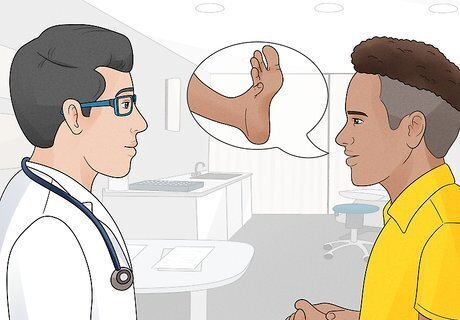
See your doctor if you’re an adult with a positive reflex. The Babinski reflex shouldn’t return at any point in your life, so something may be wrong if it does. If you test yourself or another adult and get a positive result, see your doctor for an exam. Neurological disorders like multiple sclerosis, lateral sclerosis, meningitis, or a brain tumor could cause a positive Babinski test. Don’t jump to conclusions though—always see your doctor if you think there's a problem. You could also have a positive Babinski test after an injury to your back or head. This could be a sign of nerve damage.

Remember that no reflex is a normal result. It’s possible that you’ll test yourself or someone else and not find any reflex. This is considered a neutral response, so nothing is wrong if nothing happens when you do the test. If you were trying to test yourself, it’s possible you weren’t relaxing your foot enough. Try having someone else do the test and relaxing your leg as much as possible. Remember—a positive Babinski result at home by itself without any other neurologic symptoms such as weakness, numbness/tingling, or loss of sensation does not necessarily mean that there's a worse underlying diagnosis. It's always best to be assessed by a medical professional, as it's easy to jump to conclusions with an at-home test.


















Comments
0 comment